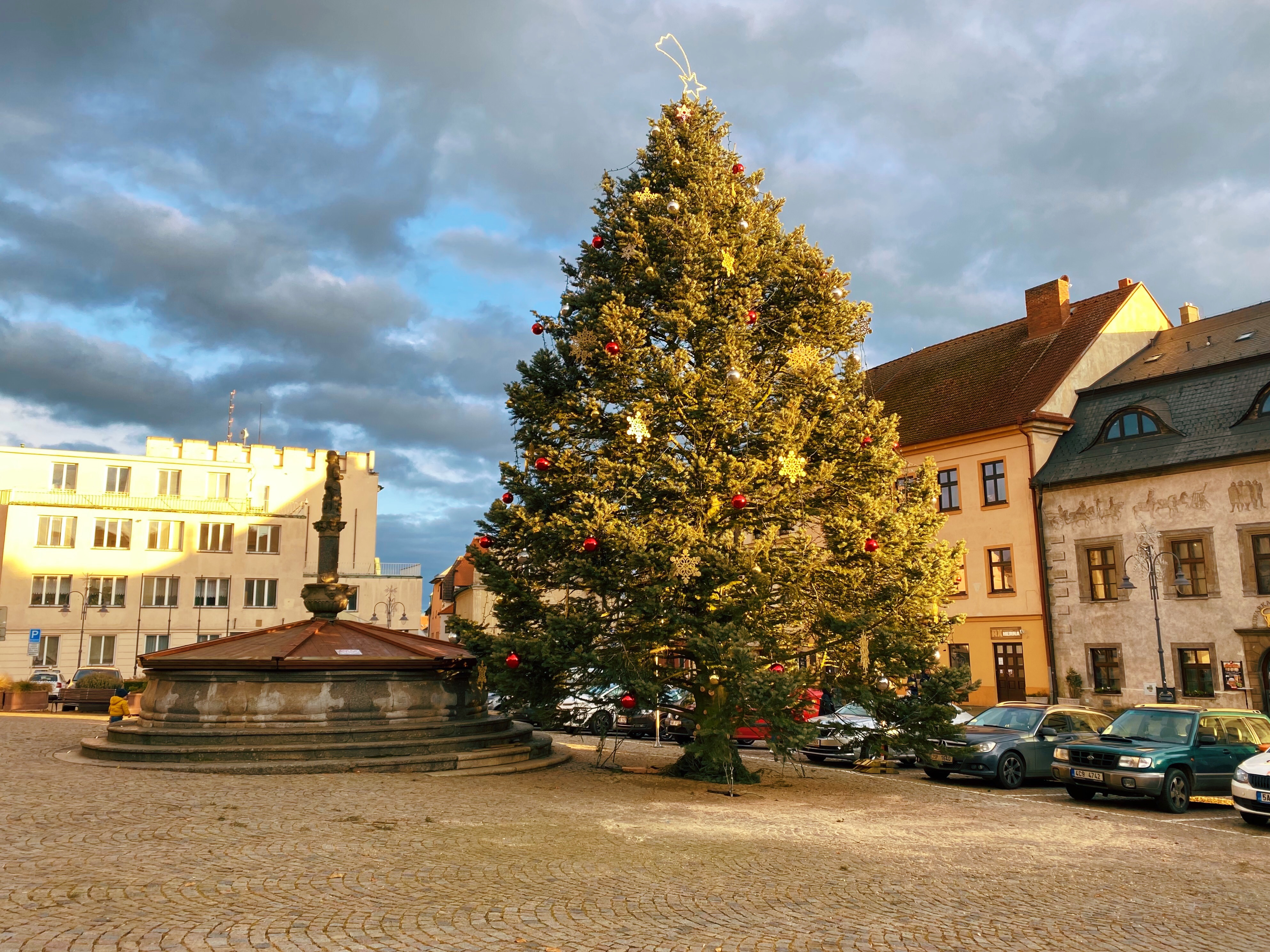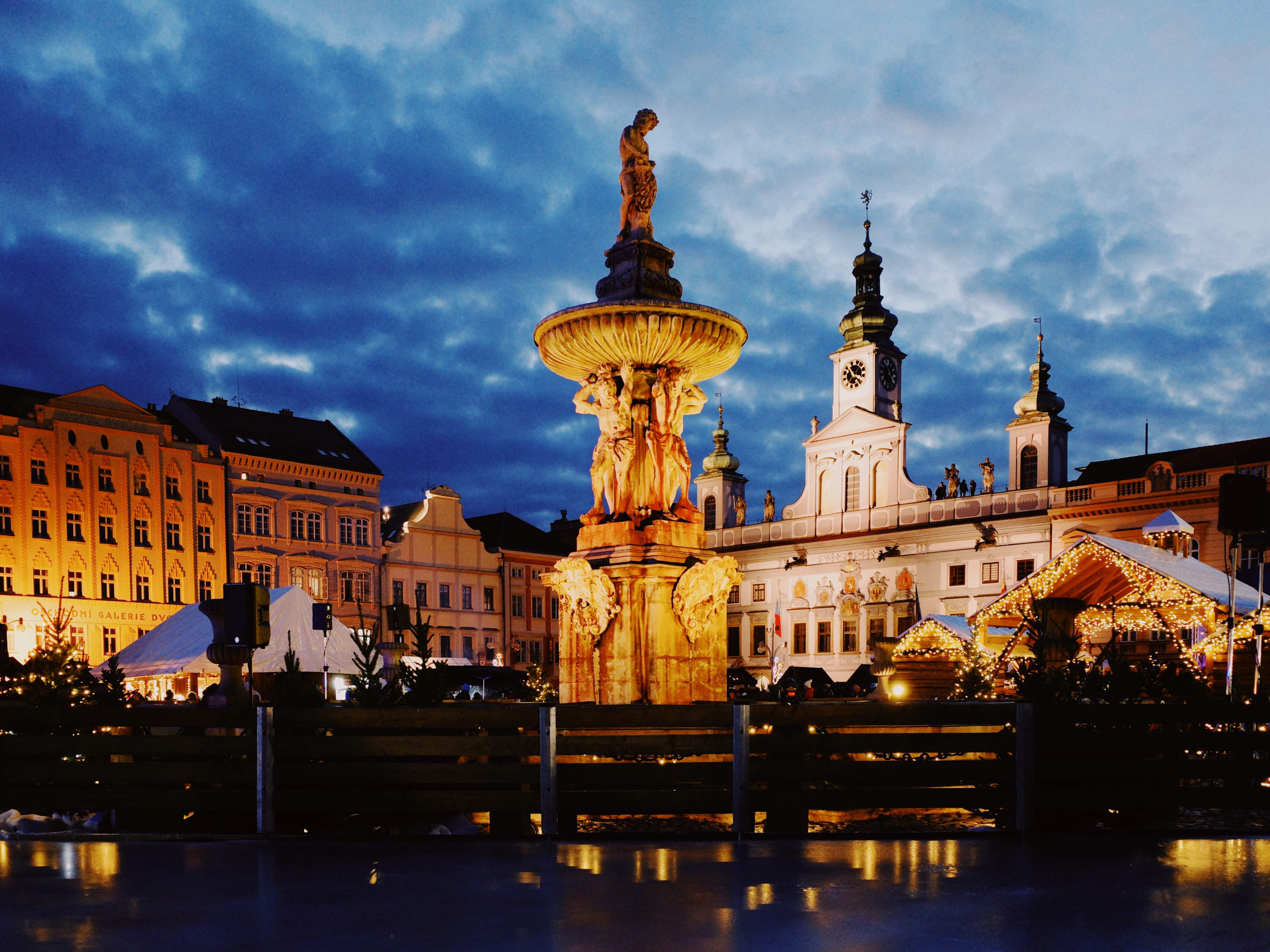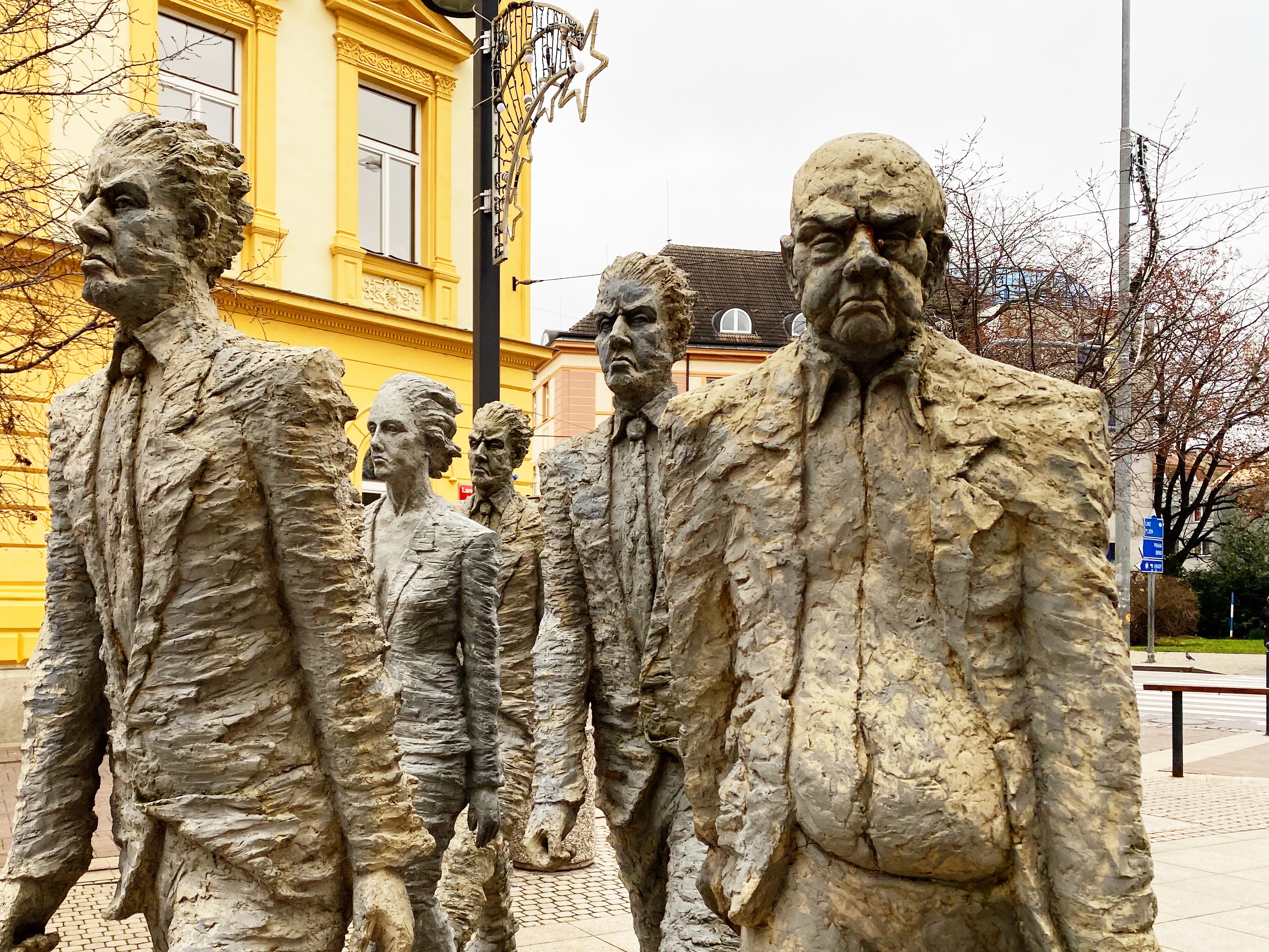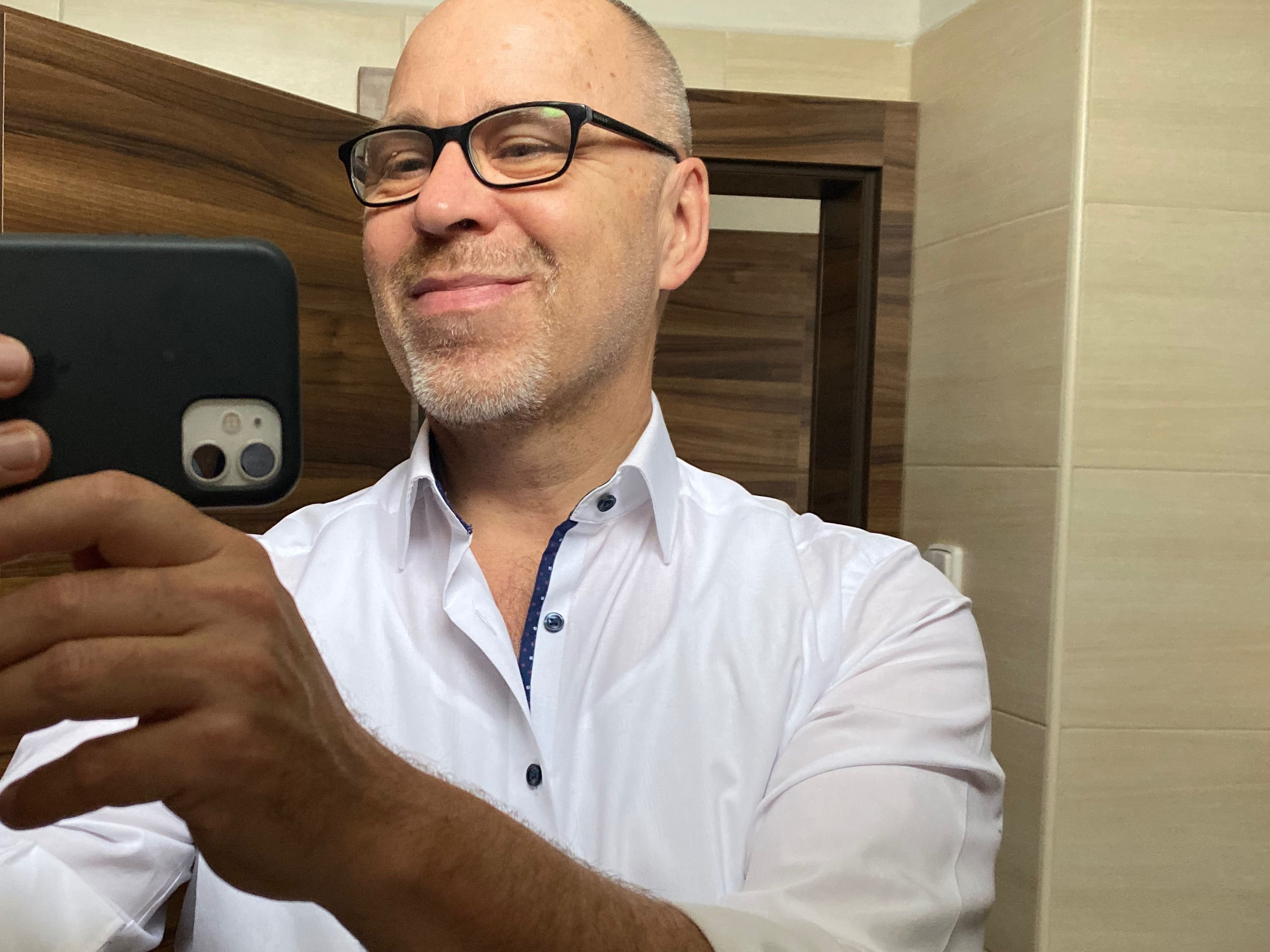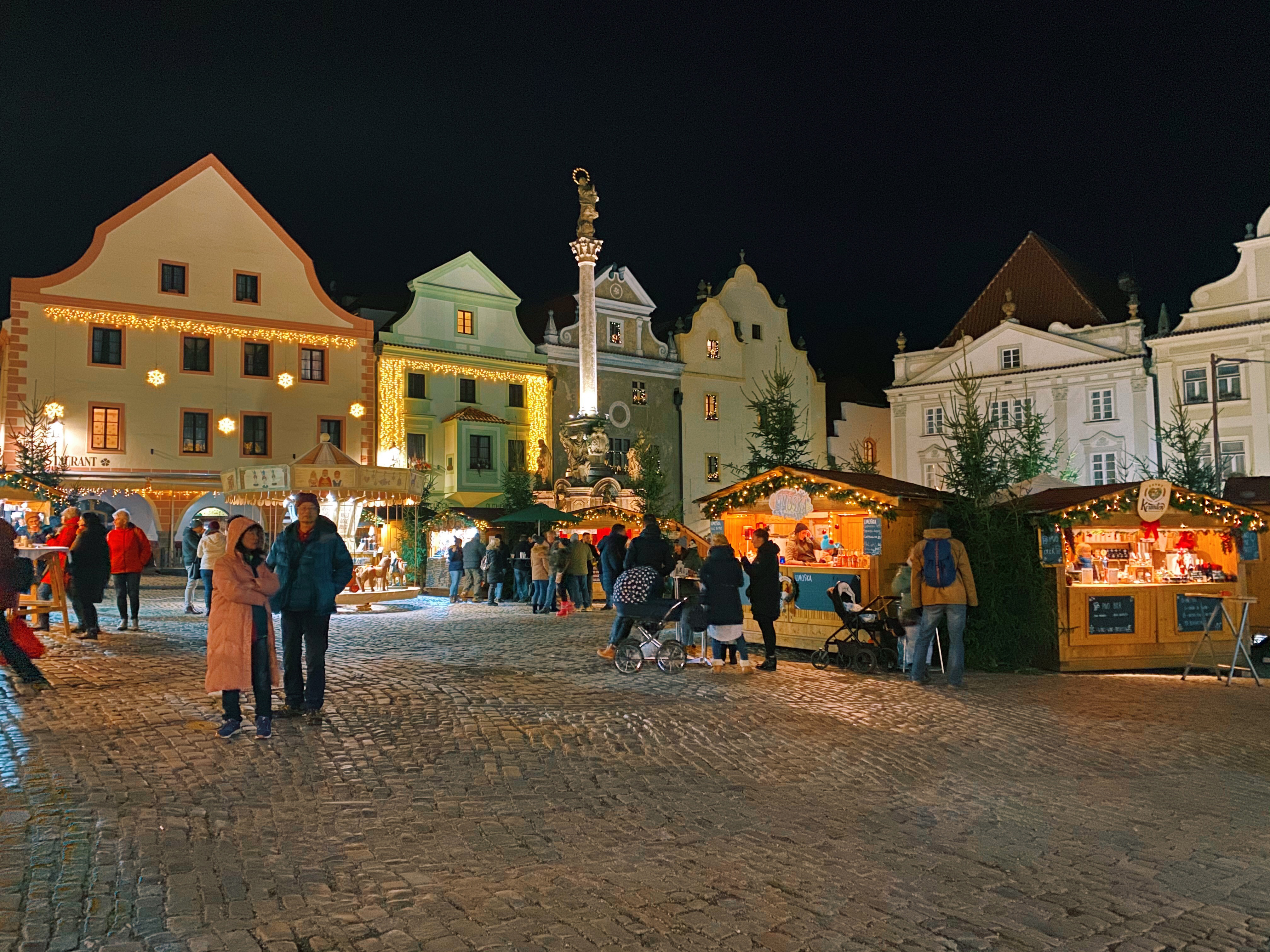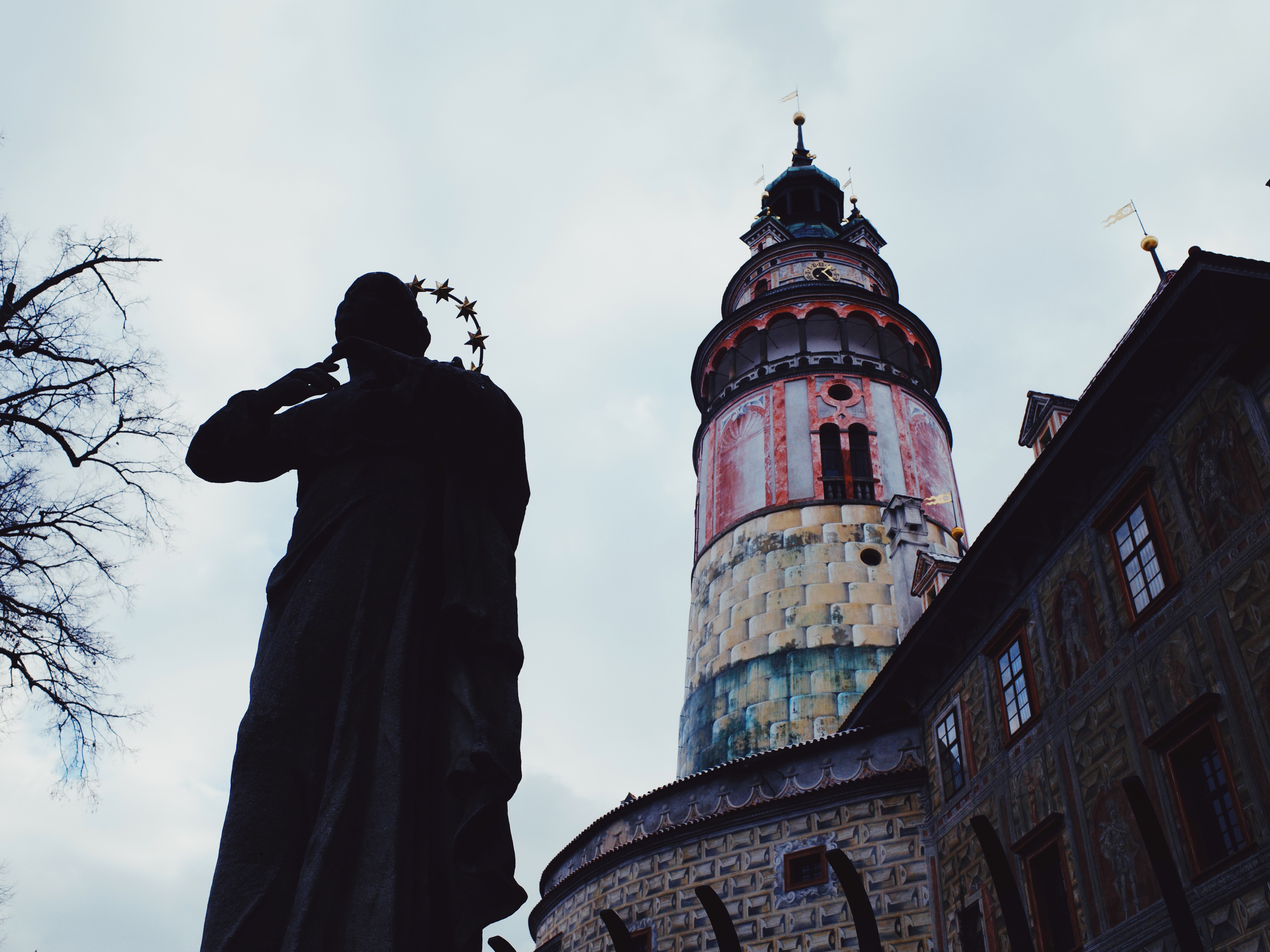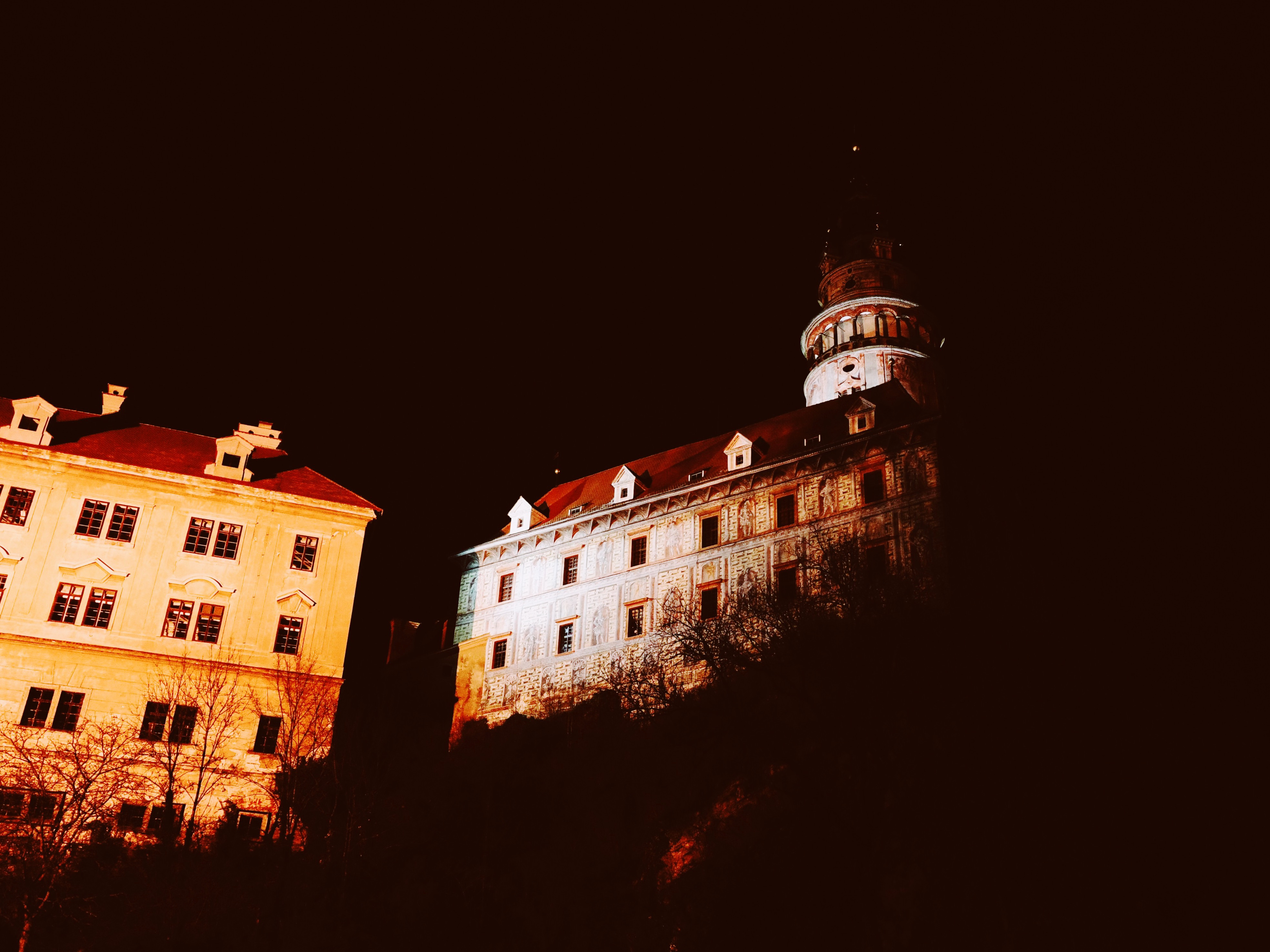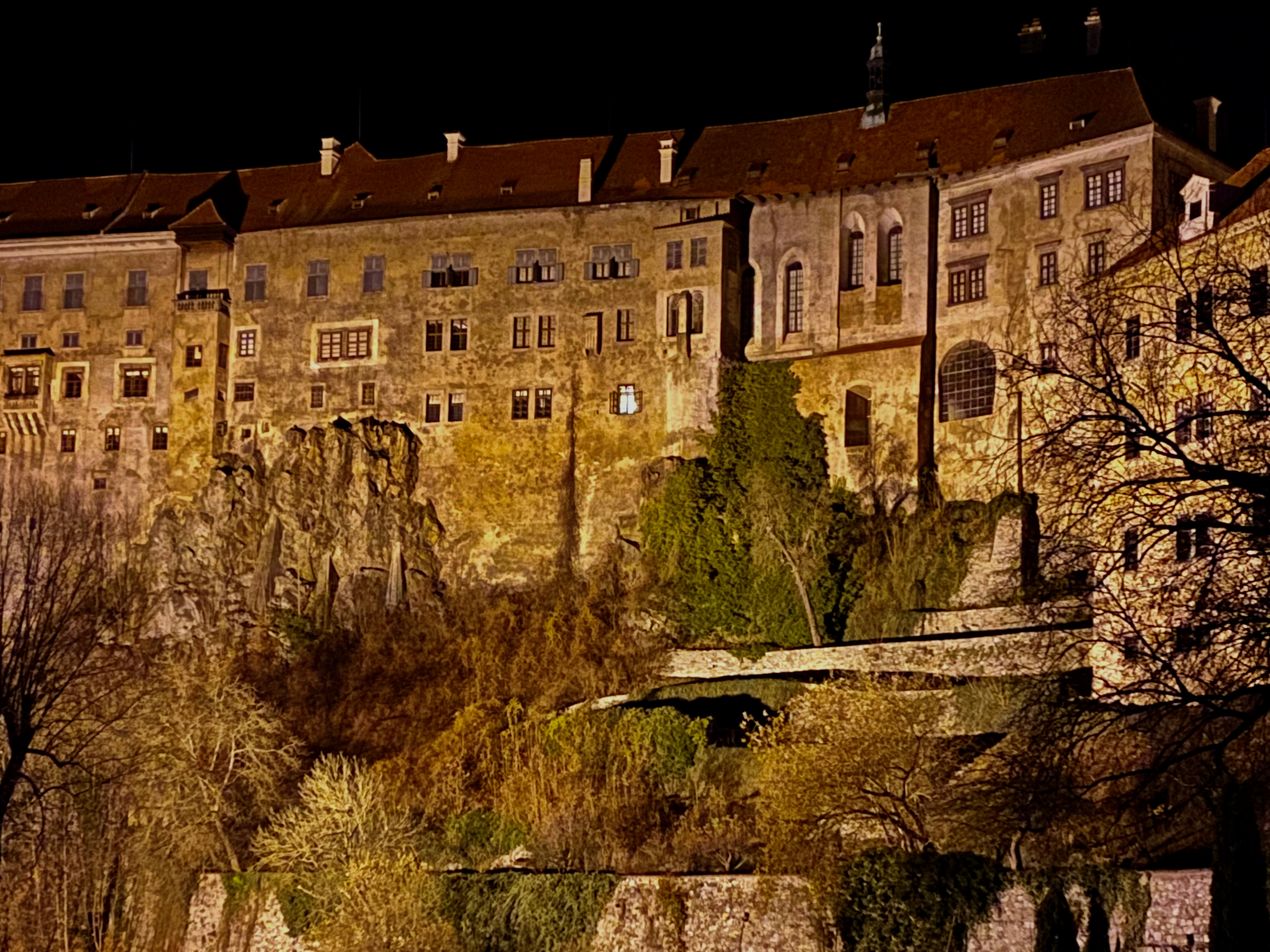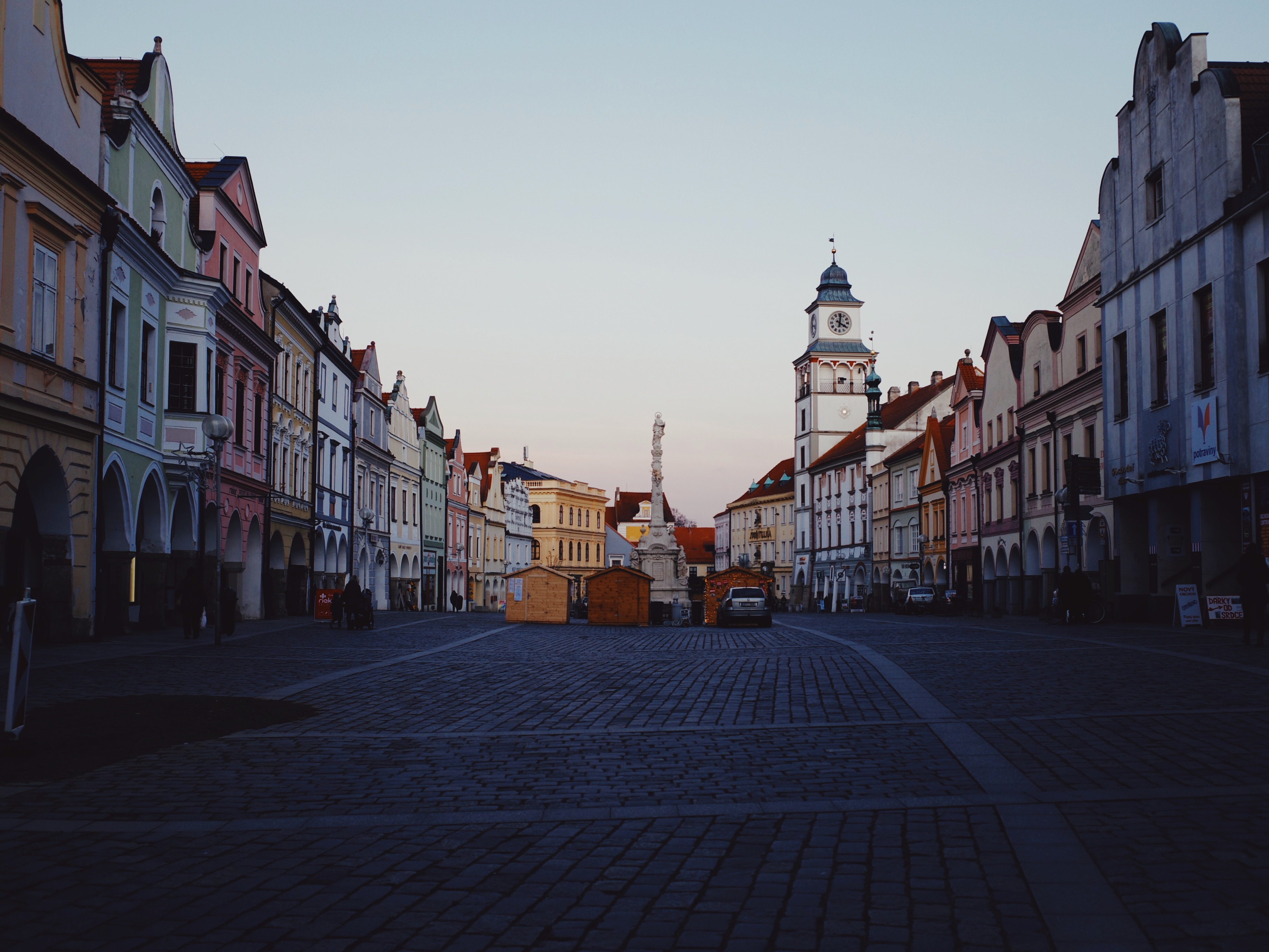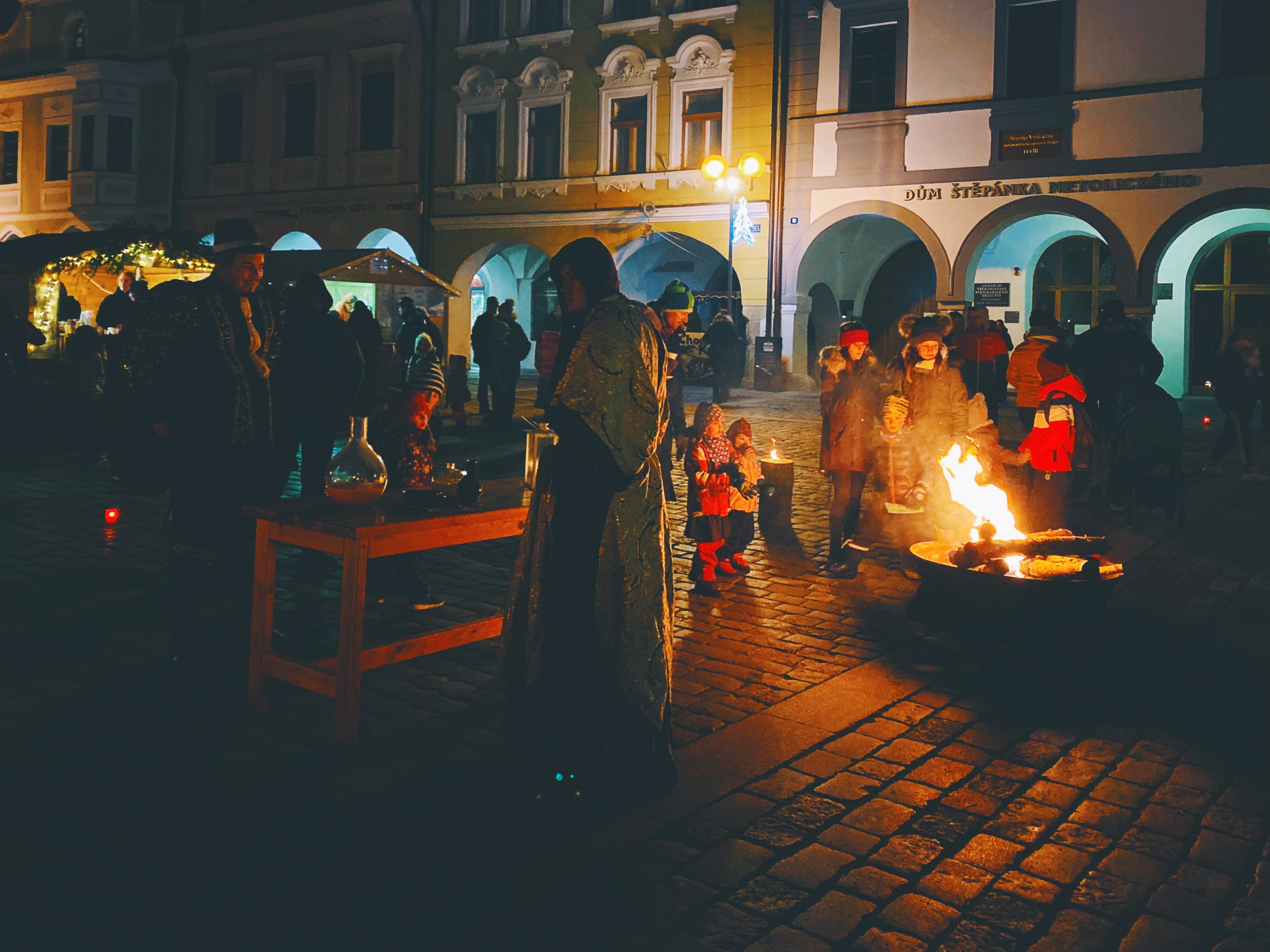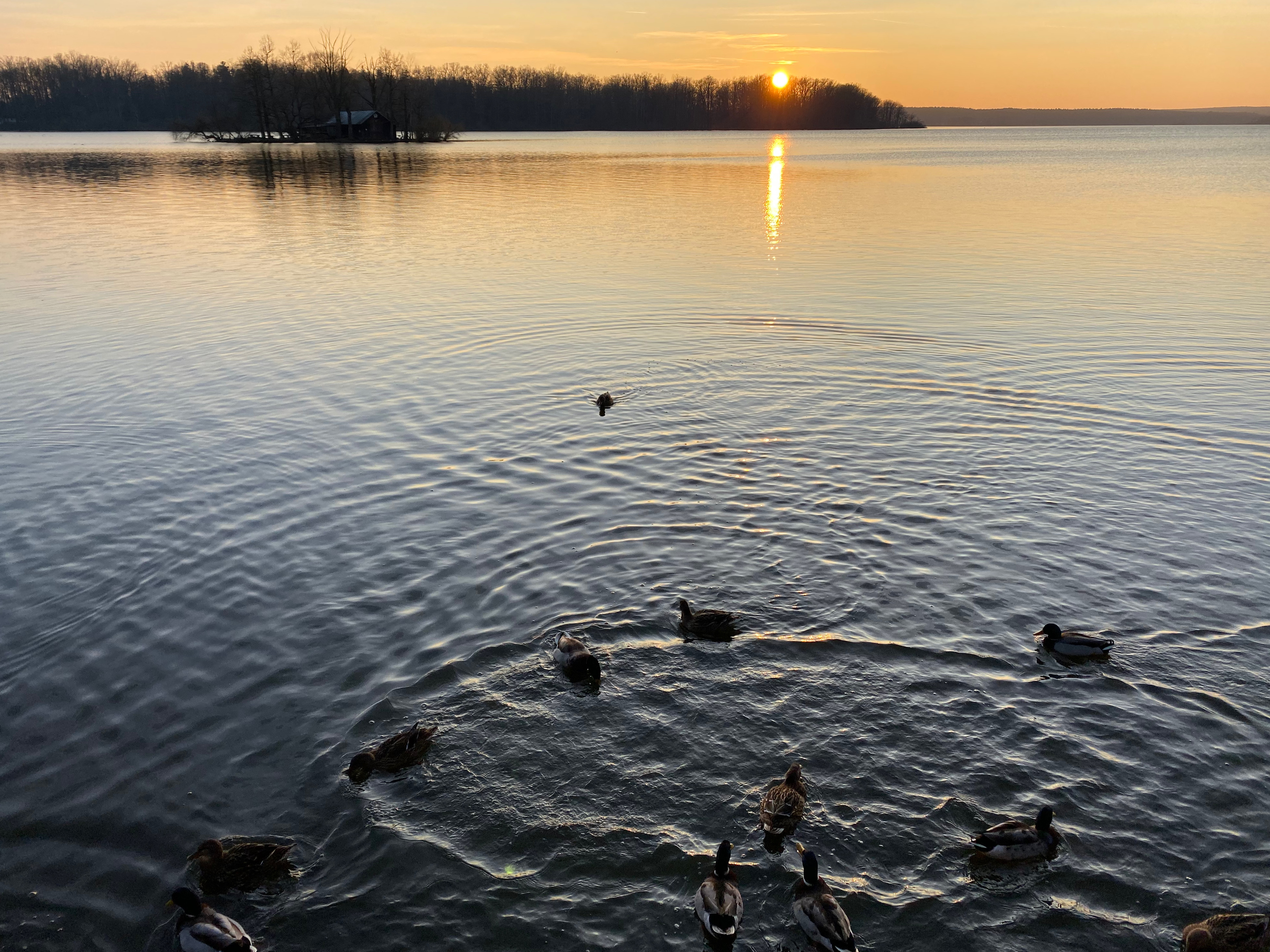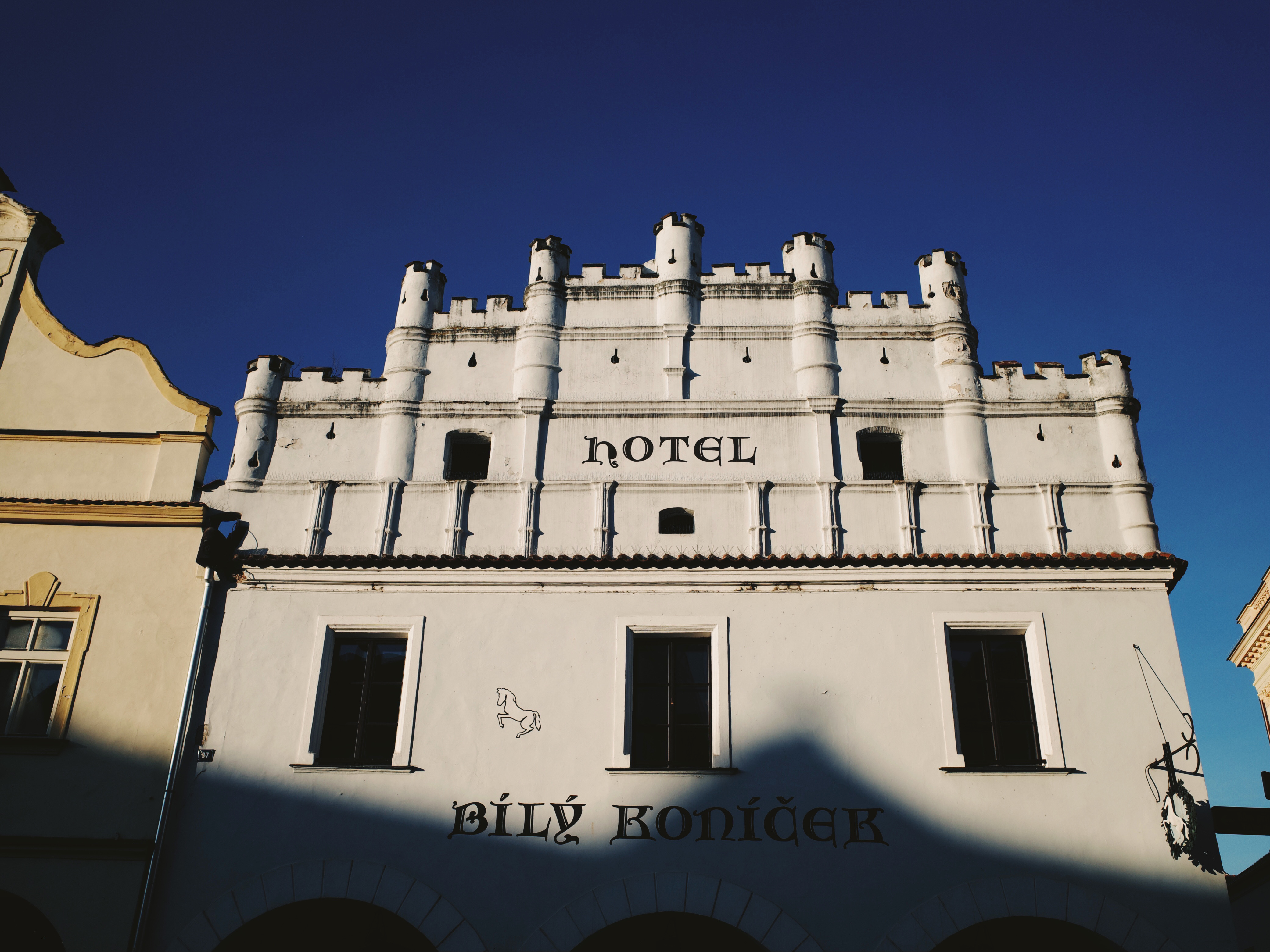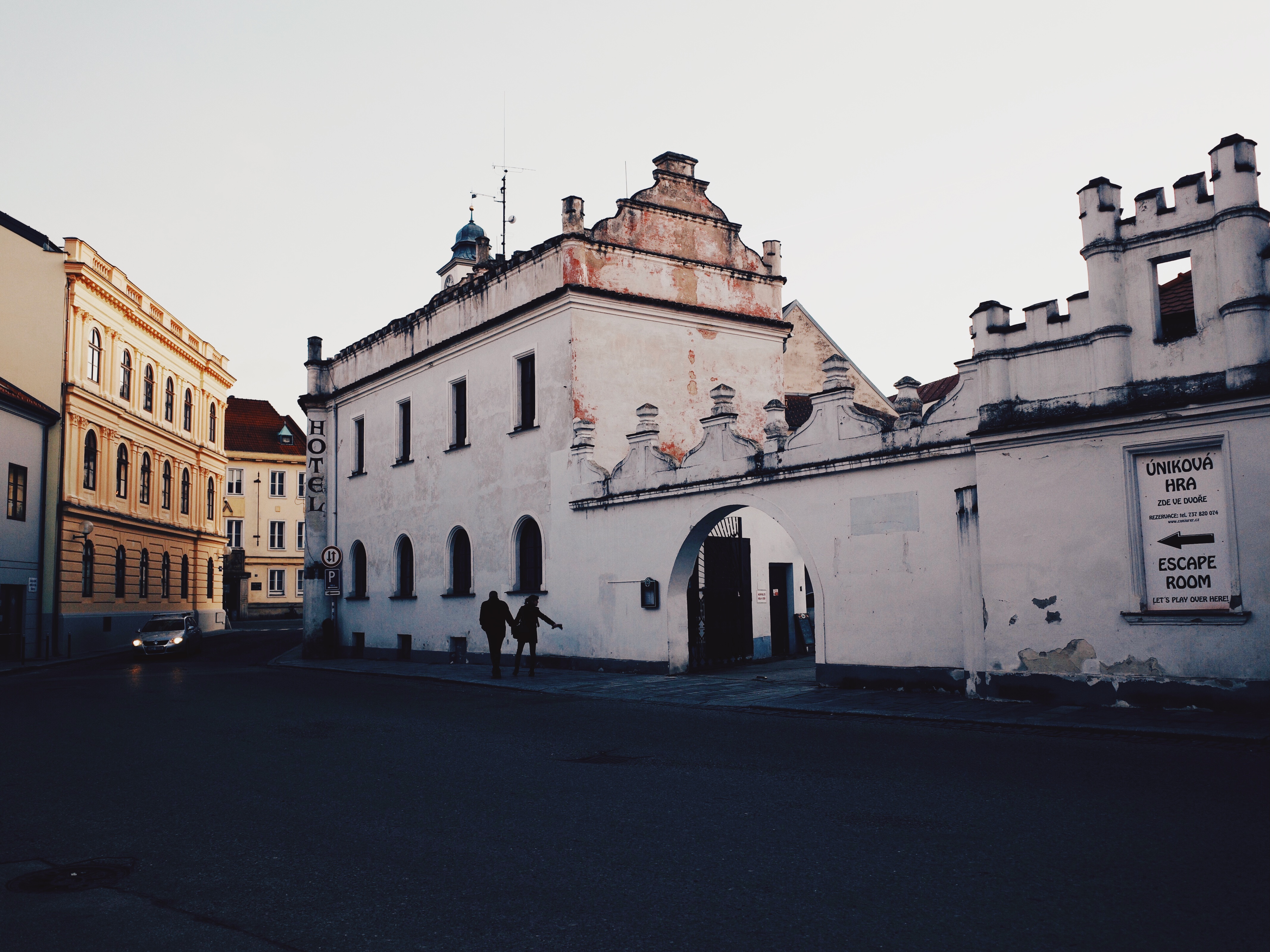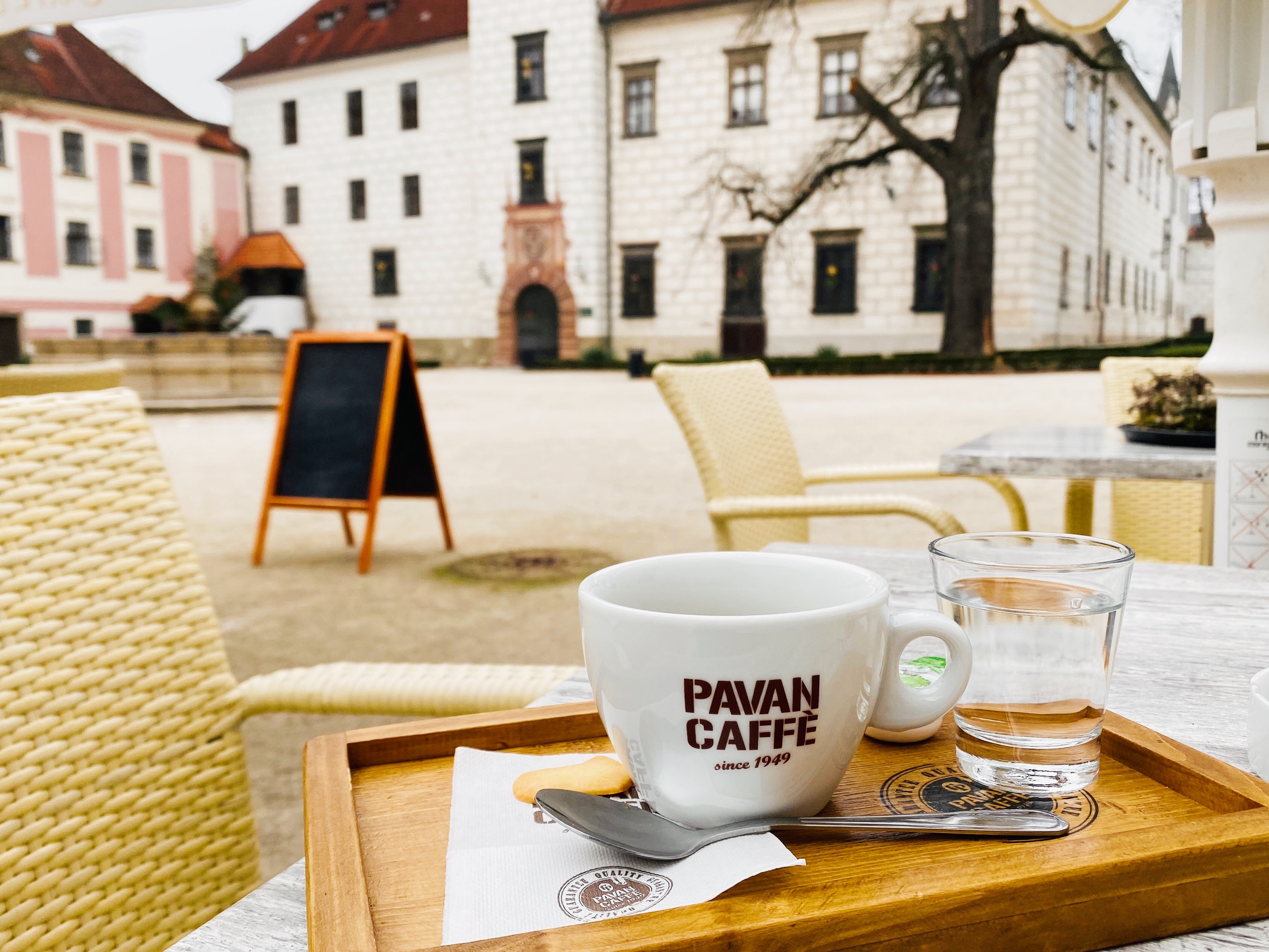One morning in late November 2019, I left my Prague apartment to take the tram to the city’s main train station. I was about to start an eight-day research trip for Lonely Planet that would take me to four cities in the southwestern part of the Czech Republic: Tábor; České Budějovice; Český Krumlov; and Třeboň. The information would be used to update the Lonely Planet guide to Prague and the Czech Republic, scheduled for publication in 2020. (Status update: I still have no idea if this guide will ever see the light of day).
Ordinarily, I might have been tempted to drive the relatively short stretches of road that this particular research trip would require. As we were already well into November (and I had forgotten to put on the car’s winter tires), though, I opted instead to take the trains and buses. The weather looked fine as I headed over to the train station, but it’s hard to predict what will happen this time of year. I didn’t want to get stuck on any icy roads (or get pulled over by an enterprising cop carrying out a spot check).
The late-fall, early-winter research window was strange for a book like this one. In the Czech Republic, attractions like castles and historic buildings – especially in smaller towns and cities – close down in October for the winter season. This wouldn’t be the first time I’d find myself researching a “warm weather” destination in cold weather. A couple of years earlier, Lonely Planet sent me to Russia at the end of March. On that trip, I woke up one morning in tourist-empty Nizhny Novgorod to 10 cm of snow on the ground. I’ve been in the guidebook biz long enough, though, to know better than to question an editor on research dates. After all, a job is a job. In fairness to the editors – and to the publishers – research dates are often determined more by marketing and printing schedules than what might be considered an ideal time to visit a particular location.
The odd research time might even work in my favor. Finding hotel rooms and tables at restaurants would be a snap. I’d have whole places to myself. And, besides, I’d be traveling at the start of the holiday season and would be able to experience some of the Czech Republic’s pre-Christmas rituals – like the lighting of the town Christmas tree and the annual Sv Mikuláš (St Nicholas) Eve celebration – that always feel more special in smaller places than in big cities like Prague.
The first leg was a short one-hour train journey down to Tábor, an old Hussite religious stronghold from the 15th century. The town’s claims to fame include a historic public square named for the radical Hussite warrior, Jan Žižka, and a labyrinthine network of tunnels below the square where the residents would hide out during those bloody religious conflicts. The best part of visiting Tábor, though, is simply rambling around the tiny lanes that radiate off the main square and don’t actually lead anywhere. Legend has it Tábor’s confusing street plan was laid out intentionally to thwart would-be invaders. The enemies might be able to breech the town walls, but once they got inside, they’d quickly get lost.
Tábor has several smaller hotels, including one of the most expensive boutiques in the country, but I booked instead at the communist-era, high-rise Hotel Palcát, a few blocks from the square. This was the hotel I had stayed in during my first visit to the city in 1991, and as readers here will know by now, I love these old places. I wasn’t sure yet whether I would include the hotel in our book, but that wasn’t the most important consideration on this trip. By the end of November, in this part of Europe, the sun starts to set at around 4pm. The last thing I wanted was to be stuck alone as the only guest in a cold, dark hotel. At least I knew the Palcát would be filled with people.
The Palcát turned out to be better than I remembered. The place had been renovated within the last couple of years and was at least as nice as a mid-priced chain, like a Ramada or Holiday Inn. I handed the receptionist my passport to check in and experienced one of those familiar guidebook-writer moments. As she read over my personal details in the document, I wondered what she might be thinking: Why was a lone foreign guy staying at a hotel in Tábor on a random night in November? Was I here on business? To meet a woman? Could I really be a tourist? Maybe a drug smuggler? (I’ve been listening to way too many true crime podcasts these days.) As a brief aside, the Palcát was busier than I bargained for. Some kind of town music contest was scheduled in the hotel auditorium on the night I arrived. I could hear the contestants babbling in the corridors long into the wee hours of the morning.
I spent the rest of the first day and all of the second on that traditional Tábor trek through the Old Town. As I was already familiar with the main sights, I kept my eyes peeled for what would be my most valuable contribution to this book: finding good places to eat and drink. I was more than a little surprised to discover that Tábor had a new “Uyghur” restaurant, Rafariz, to go with the town’s decent Vietnamese and Indian restaurants. Uyghur? I wasn’t even sure what a Uyghur restaurant might serve. Later that day, I returned for a meal of “plov” ( a rice dished topped here with shaved beef) and a crunchy pomegranate-seed salad. It was more than decent. I also found a hipster, craft-beer joint on the main square (check!) and an authentic farm-to-table Czech restaurant and wine bar, Thir, on a side alley off the square. It was exactly the kind of place our readers would want to know about.
On that second day, the streets felt unnaturally empty. Shortly after sundown, though, the square filled with people who had come out to watch the ceremonial first lighting of the Christmas tree. I appreciated the town fathers’ instinctive feel for drama as they kept the crowds waiting in the dark for what felt like hours (probably more like 30 minutes) before flipping the switch and flooding the square with colorful lights. One of Tábor’s finest vocalists (maybe the winner of the previous night’s talent contest?) climbed onto a small stage at the middle of the square to lead the city in holiday song. Within a couple of minutes, the gentle strains of Elvis Presley’s “I Can’t Help Falling In Love” filled the old Hussite stronghold and bounced off the square’s Renaissance facades. It had been a strangely moving moment, and I quickly found a stand selling hot wine to more fully infuse myself with the holiday spirit.
The next morning, I packed up my roller-board and walked/wheeled the short distance back toward Tábor’s train station for the rail hop down to České Budějovice. I was looking forward to the visit but also apprehensive about how I would pass the time. České Budějovice is one of several blandish, medium-sized cities splashed across the Bohemian countryside. Besides touring the local Budvar brewery (the original “Budweiser”), there are no true “must-sees.” The main attraction is the town itself: the enormous central square, Náměstí Přemysla Otakara II, and the arcaded alleyways that run off in all directions. Whatever traditional sights do exist, like the museums or fortifications that run along the medieval town walls, would likely be closed for the season. There was a limit to how much Budvar beer I could reasonably drink. As was the case in Tábor, though, I figured the best use of my time would be to try to locate the city’s pulse – the popular clubs, bars, restaurants and coffee shops – and share that info with our readers. As the train pulled into the city's relatively quiet station on a wet, cold afternoon on the last day of November, I was hoping that pulse might still be beating.
I had booked a room at one of my favorite hotels in the city, the tiny Pension Centrum, off the main square. Just as I’d feared in Tábor, though, I was the hotel’s only guest. The girl at the reception desk told me they would close the desk at 6pm and after that I would have to let myself into the hotel on my own. She added there wouldn’t be any breakfast as there weren’t enough guests to make the service worthwhile. I wasn’t bothered too much. I knew of several places near the square where I could find coffee and grab a bite to eat. I just hoped I wouldn’t lose my key.
I spent the rest of the first day and all of the next poking my nose into every one of České Budějovice’s nooks and crannies and rediscovering how much I like the place. Part of the fun of researching a guidebook on one country over several editions is the chance to observe how things change over time. I liken it to a kind of “guidebook archeology” – uncovering layer upon layer of commercial life, as a pub might, over time, morph into a coffee shop, then a bookshop and then a bank. A restaurant might open to great fanfare one year and suddenly, inexplicably close the next. Hot clubs inevitably cool off. Formerly forgotten corners of a city suddenly wake and fill with people. Every visit feels a little different.
On this trip, I discovered that one of my favorite restaurants from a previous visit had indeed vanished without a trace, but that my standard go-to Indian was still thriving. Next door, I found an excellent third-gen coffee roaster, Datel. Around the corner from there, was another cute coffee bar, Fér Café. On that first night, I returned to a popular pub-crawl street to discover a new cocktail bar, Žlutá Ponorka. When I cautiously opened the door to look inside, an overzealous hostess quickly intercepted me and asked if I had a reservation. I couldn’t talk my way past the velvet rope. České Budějovice had clearly arrived.
No matter. On that particular evening, the real action in town wasn’t in any cocktail bar, but rather at the Christmas market on the main square. The baroque fountains and statues were bathed in colorful splashes of light. The strobes shifted slowly from blue and green to salmon pink and bright orange. A little ice-skating rink, jammed with kids, snaked through the center. Souvenir stalls lined the middle of the square, while the bars on the periphery opened up impromptu hot-wine dispensaries. After sampling a few cups of the stuff for myself, I wandered over to the square's outdoor stage and watched as České Budějovice’s own singing talent belted out a string of crowd-pleasers. Elvis, on this night, was pushed out in favor of a medley of Backstreet Boys and the Spice Girls. Everyone was smiling.
The next morning, I walked over to České Budějovice’s bus station to grab a bus for the quick 40-minute trip over to Český Krumlov. The quirky train that links the two cities would have also been a transit option, but Český Krumlov’s train station is located surprisingly far from the center of town. The bus is much more convenient. Truth be told, I was dreading this part of the journey. I love Český Krumlov, and it’s every bit as beautiful as it looks in the pictures, but in recent years, the town had become unmanageable. There were too many tourists. The already large number of European and American day-trippers had been spurred in recent years by a big uptick in Chinese visitors. Giant tour operators shamelessly shipped in thousands of travelers on coaches that shuttled back and forth from places like Salzburg and Munich. I can understand the irony of a travel writer complaining about over-tourism. When I visit places like Český Krumlov, that have so obviously been spoiled by tourism, I always have a “look in the mirror” moment. (One possible upside to the pandemic is that the collapse in travel may offer a chance to restore this balance going forward.)
I got lucky on this particular trip. Narrow Latrán, the small, cobblestoned street that runs through the center, was crowded here and there, but by no means impassable. Maybe it was the timing of my visit, early December, or the poor weather, cloudy and bitterly cold, but I found that I could avoid the other visitors simply by stepping off the main route for a block or two. I had booked a room in an old favorite hotel, the U Malého Vítka. Over the years, I’ve stayed at the hotel many times and even brought my parents here on their own visit to Český Krumlov some years ago. It’s a charming place. Each room is laid out differently and named after a water sprite or character from a Czech fairy tale. I admire the way the hotel, in spite of the tourist onslaught, has remained true to its Czech cultural roots. I had chosen an ordinary, no-frills single when I reserved, but the owners had other plans. I later learned they had recognized my name (on checking out, I had a nice, catch-up conversation with a receptionist whom I’d met many years ago who filled me in). They had upgraded me to the “honeymoon suite,” complete with a ridiculously big, four-poster bed and a raised bathtub standing on a block of wood off to one side. There was no polite way of declining the upgrade. As they showed me to my room and I stammered out a few words of gratitude, my mind was already racing to that precarious-looking bathtub set-up. I only rarely take baths, and I didn’t want to embarrass myself by slipping on the porcelain while taking my morning shower.
I spent the next couple of days aimlessly wandering around. At night, after the streets truly emptied out, I brought out my iPhone, with its nifty night-vision camera, and looked for ghosts along the town's lonely back alleys. I’ve visited Český Krumlov at many different times in my life, and every corner hides a memory, but I often go back in my mind to my first visit, in February 1991. I was traveling with my girlfriend, Delia, while researching the first edition of the Fodor’s new “Czechoslovakia” guide. Delia had been obsessed at the time with the Austrian painter Egon Schiele, whose mother had been born in Český Krumlov. Schiele used the town as a model for his cycle of paintings titled “Die Tote Stadt" (The Dead City). As I looked out at the darkened castle complex, with its dozens -- if not hundreds -- of empty windows, the place certainly looked “dead.” On one evening, I took advantage of the relative quiet to book a table at the ever-popular tavern, “Krčma Šatlava.” The Šatlava would normally be a no-go zone at the height of the tourist season, but on this particular visit, the hostess showed me over to a big, empty table, next to a roaring fire. Not everything, though, was exactly as it appeared. After finishing a plate of grilled meats and drinking a couple of beers, I left my table briefly to visit the men’s room. On the way over, I peeked in at what looked like a hidden dining area, adjacent to the room that I had been sitting in. The space was crammed with dozens of Chinese tourists.
The last leg of the trip was to the southern-Bohemian, carp-fishing metropolis of Třeboň. Getting there from Český Krumlov took a bit of added planning, as there wasn't a direct bus or train link. I returned to České Budějovice to catch a connecting bus over to Třeboň. The overall distances were small, though, and the trip took just a couple of hours. Třeboň is surrounded by hundreds of carp ponds that were laid out by the Rožmberk noble family from as far back as the 14th and 15th centuries. The surrounding landscape, comprised of ponds and woodland, is beautiful, and the region is popular during warm-weather months with hikers and cyclists. I discovered that early-December, though, was an entirely different story, and for the first time on the trip, I started to question what those Lonely Planet editors had been thinking. Třeboň looked to be entirely deserted.
Thankfully, Třeboň’s famous fish restaurants were open for business as usual, so there was no chance I was going to starve. During the trip, I enjoyed a late lunch of pike-perch and pumpkin puree at “Šupina” and an equally good fish dinner (this one with potatoes and a side of the town’s excellent Regent beer) at the “Bílý Jednorožec” (White Unicorn), nearer to my hotel on the main square. On the second day of my visit, I puttered around the empty streets and popped in at a new museum on the square dedicated to pond-building. The museum, remarkably, was still open on a day there didn’t appear to be another soul in town. The curator was so excited at the prospect of a visitor that she insisted on leading me on an hour-long tour of the exhibits (while speaking the entire time in rapid Czech, like a local auctioneer might talk). I spent most of the tour simply smiling and nodding my head.
As I exited the museum, dusk was already setting in, and I felt a pang of panic as I wondered how I would spend the evening. And then I remembered. It was Svatý Mikuláš (St Nicholas) Eve, December 5. The square would soon fill up with families who'd come out to see the Santa Claus-like figure of Mikuláš, complete with full white beard and (in this case) pointed bishop’s cap. Mikuláš and assorted angels and devils would roam the streets and dole out sweets to kids who’d been good that year (and stuff the bad kids into bags to take them away forever). Třeboň didn’t disappoint. Around 6pm, the organizers showed up and lit some bonfires to help people keep warm. At around the same time, the hot wine started to flow. Not long after that, Mikuláš and his henchmen appeared. The devils were truly scary. Like invading Tatars from the 13th century, they poured into the square and chased around the kids, who screamed their heads off. If that’s not enough to convince a six-year-old to commit to a year of good behavior, I don’t know what is.
The next morning, I packed my roller-board for the last time and headed out toward Třeboň’s small train station to catch a direct train back up to Prague. My research trip had been fun, but it was time to head home. I would only have a few days to write up my notes before I had to travel down to Budapest to work on a Danube River Christmas cruise for National Geographic Expeditions. It was 2019, after all, and I still had things I had to do.
(Scroll past the map for more photos)




